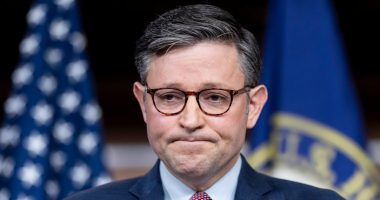The Centers for Disease Control and Prevention has relaxed physical distancing requirements for children in school, from 6 feet to 3 feet. The change in guidance, announced Friday, will allow more students to be inside classrooms.
The recommendations come with a few caveats. Masks remain mandatory, and teachers and other adult school staff must still adhere to the 6 feet guidelines.
Full coverage of the coronavirus outbreak
The change comes amid a massive push to get kids back in the classroom, from lawmakers to parents.
Multiple studies have shown increases in depression and anxiety among children during the pandemic. And a survey from NBC News and Challenge Success, a nonprofit affiliated with the Stanford Graduate School of Education, found lower stress levels among students who have been able to spend time in the classroom, compared with their peers exclusively doing virtual learning.
For elementary school students, the CDC now recommends a physical distance of 3 feet. The same rules apply to middle and high school students, unless they live in an area where Covid-19 is spreading at a high rate, in which case distances of 6 feet should be maintained.
And for all students, no matter the rate of community spread, distances of 6 feet should still be followed in settings where masks cannot be worn, such as lunchtime, the CDC said, as well as during activities like choir, band or intense sports that involve greater exhalation. Those activities should take place outdoors or in large, well-ventilated spaces when possible.
Dr. Robert Murphy, a professor of infectious diseases at Northwestern University Feinberg School of Medicine, said that for most scenarios, a distance of 3 feet “is the biggest bang for your buck” when it comes to reducing the spread of SARS-CoV-2, the virus that causes Covid-19.
Murphy noted several studies that provide evidence for the recommendation, including one published last week that compared rates of Covid-19 case rates among students and staff in Massachusetts public schools with different physical distancing requirements. Rates were similar whether the districts required physical distancing of 3 feet or 6 feet.
And a review of research published in The Lancet last year supported physical distancing of at least 3 feet, provided that people use proper face coverings. The World Health Organization also recommends a physical distance of 3 feet.
On Friday, the CDC also published a report on elementary schools in Utah that did not have space to adhere to the 6 feet distancing rule.
“Despite high community incidence and an inability to space students’ classroom seats more than 6 feet apart,” the researchers wrote, “this investigation found low SARS-CoV-2 transmission and no school-related outbreaks in 20 Salt Lake County elementary schools.” Mask use was robust, at 86 percent.
The study concluded that the modified policy “resulted in over 1,200 student in-person learning days saved.”
Download the NBC News app for full coverage of the coronavirus outbreak
For now, the 3 feet guidance is limited to children in school. But it poses an intriguing question for the rest of society, eager to resume normal activities and perhaps get back into an office setting.
Children, however, are in a controlled environment when in school, with teachers monitoring.
“If they’re told to stay 3 feet away, if they’re told to wear masks, they do it,” Murphy said. “That’s the thing about going to school. Kids follow the rules.”
Source: | This article originally belongs to Nbcnews.com












